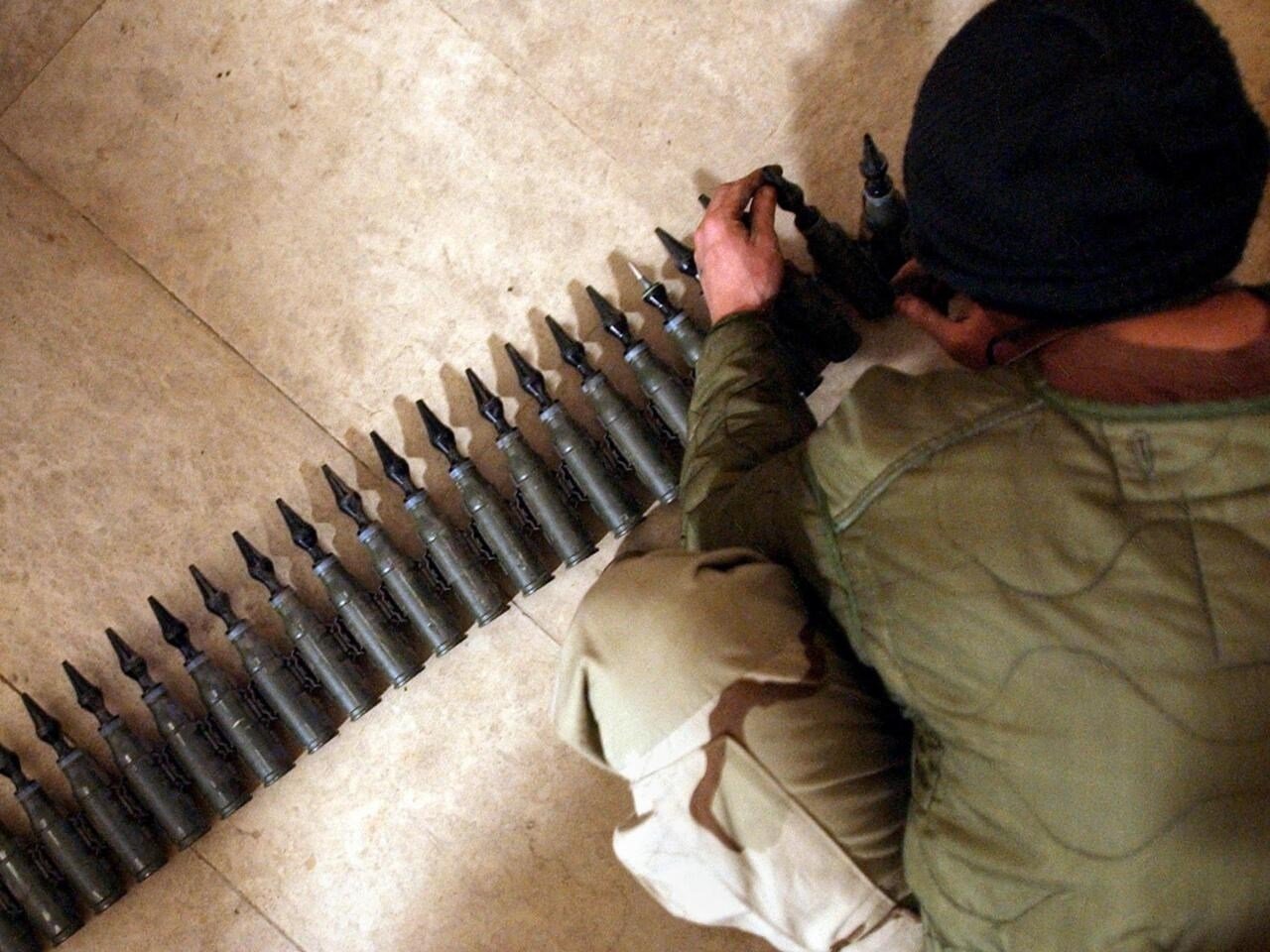US set to provide Kiev with depleted uranium tank munition: WSJ
A report by The Wall Street Journal says that the Biden administration is set to approve an ammunition package for the Abrams M1A1 tanks it sent to Ukraine which includes depleted uranium rounds.
-

A US soldier counts 25mm rounds of depleted uranium ammunition in Tikrit, Iraq, February 11 2004 (AFP)
The United States is reportedly on the verge of approving a package of ammunition that includes depleted uranium rounds, according to a report by The Wall Street Journal.
The approval of this package by the Biden administration is said to be imminent, as there are no major obstacles or objections within US decision-making rooms.
The package, which is under debate at the White House, aims to provide support for the Ukrainian counter-offensive as they continue their efforts to regain territory from Russian forces.
It follows the UK's announcement in March of its intention to provide depleted uranium ammunition to Ukrainian forces, along with training and Challenger 2 tanks. The Biden administration's decision to provide Ukraine with depleted-uranium rounds comes after weeks of internal deliberation on how to equip the Abrams tanks that the US is providing to Kyiv.
Depleted uranium rounds, regularly used by the US Army, are known for their effectiveness against armored vehicles, however, they present great health and environmental risks.
According to the WSJ report, the Biden administration is looking to provide Kiev with any advantage possible in its counteroffensive against Russia, in an attempt to put it in an advantageous position if negotiations are to be held between the warring sides.
Some officials have expressed apprehension that sending such ammunition may subject the US to criticism for providing a weapon.
While political support for Ukraine remains strong on Capitol Hill, some lawmakers caution that backing may diminish if Ukraine's counteroffensive falls short. They argue that the White House should be more supportive of Ukraine's current arms requests.
The saga over the ammunition began in January, when the White House agreed to supply Ukraine with M1A2 Abrams tanks, as part of a broader understanding that included European countries providing German-made Leopard 2 tanks.
The US fell short of its promises and opted to send refurbished M1A1 tanks, citing the difficulty of maintaining the turbine-powered M1A2 versions which could exacerbate logistical difficulties for Ukrainian forces.
The deadly effects of NATO's depleted uranium
A report published by Sputnik revealed some of the most gruesome outcomes that would result from the use of depleted uranium shells in light of recent developments.
The news agency interviewed experts from Iraq and Libya to comment on the disastrous impact the use of the shells had resulted on the health of populations - particularly with regard to increased cancer cases and birth defects.
The US and NATO claimed they resorted to depleted uranium shells in Iraq to deter armored vehicles.
Read more: Despite horrors, warnings, UK's depleted uranium lands in Ukraine
Yugoslavia was likewise not spared from the humanitarian catastrophe as during the 1999 NATO invasion, some 31,000 rounds of depleted uranium ammunition were fired - causing environmental damage at unprecedented levels.
The radiation was so severe that even troops from allied forces reported abnormally high rates of cancer cases in Kosovo.
When the UK made the announcement that it will supply Kiev's forces with the shells, pictures of deformed babies had begun to resurface all across the internet.
Depleted Uranium rounds. If you don't know what they can do take a look at the horrible birth defects innocent Iraqi children experienced because we used them during our illegal war in Iraq.
— sharmila chowdhury (@sharmilaxx) March 23, 2023
This government wants to send Uranium to Ukraine on behalf of UK citizens. Pure evil! pic.twitter.com/wMnyakZS5V
According to Souad Naji Al-Azzawi, a leading Iraqi expert on matters ranging from nuclear waste management to depleted uranium contamination, the US-led coalition fired about a million depleted uranium shells in Iraq in 1991.
This resulted in pockets of contamination amounting to between 300 and 400 tons of depleted uranium forming over an area of more than 1,750 square kilometers west of Basra.
The contamination was further worsened with the 2003 invasion during which an estimated 181,000 depleted uranium shells were used.
Birth defects and cases of cancer had begun to appear at an out-of-control pace across the capital city of Baghdad, Basra, Karbala, Najaf, Baquba, and Fallujah.
The influx of depleted uranium shells to Ukraine might prove to have deadly long-lasting effects on populations in areas of conflict, as no pledge has been made by the granting states regarding a post-war clean-up.

 4 Min Read
4 Min Read









